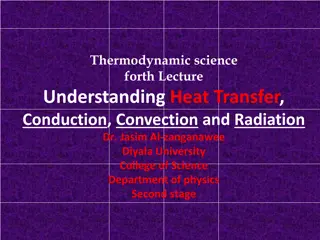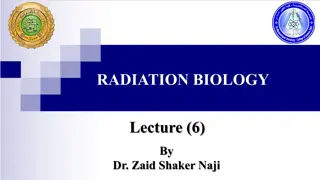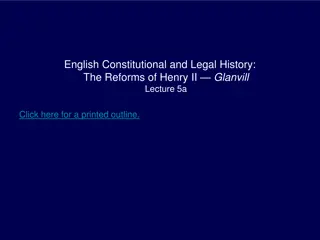Introduction to Semantics and Pragmatics: Understanding Meaning in Language
This lecture delves into the fundamental concepts of semantics and pragmatics, exploring the distinction between extension and intension in language meaning. It discusses the relationships between words, the world, and other linguistic elements, emphasizing the importance of sense, denotation, and reference in understanding linguistic expressions. The interplay between sentence, statement, utterance, and proposition is also examined, highlighting the significance of truth conditions and propositional content in conveying meaning. Additionally, the significance of connotation and denotation in language interpretation is elucidated.
Download Presentation

Please find below an Image/Link to download the presentation.
The content on the website is provided AS IS for your information and personal use only. It may not be sold, licensed, or shared on other websites without obtaining consent from the author. Download presentation by click this link. If you encounter any issues during the download, it is possible that the publisher has removed the file from their server.
E N D
Presentation Transcript
Lecture 2 (Chapter 2) Introduction to Semantics and Pragmatics
Chapter 2 2.1 Introduction 2.2 Arguments and predicates 2.3 Sense, denotation, and reference: intension and extension 2.4 Sentence, statement, utterance, and proposition 2.5 Logical properties of sentences 2.6 Logical classes 2.7 Logical relations 2.8 Quantification 2.9 Use and mentionDiscussion questions andexercises Suggestions for further reading
2.3 Sense, denotation, and reference: intension and extension One way of approaching the study of meaning is to attempt to correlate expressions in language with aspects of the world. This is known as the extensional approach to meaning. The thing or things in the world referred to by a particular expression is its referent(s): in saying The cat's hungry, I am (normally) referring to a particular cat, and that cat is the referent of the expression the cat. This is sometimes called the reference of the word cat. The alternative to an extensional approach to meaning is an intensional approach. Take the word cat. For them, sense is a matter of the relations between a word and other words in a language. So, for instance, the sense of cat would be constituted by its relations with other words such as dog (a cat is necessarily not a dog), animal (a cat is an animal), miaow (The cat miaowed is normal but ?The dog miaowed is not).
Note. Connotation: the emotional content of a word. Denotation (core meaning): the meaning of an expression less its connotative meaning.
2.4 Sentence, statement, utterance and proposition 2.4.1 Sentence meaning; truth conditions; propositional content A sentence is a grammatically complete string of words expressing a complete thought. A sentence can be thought of as the IDEAL string of words behind various utterances. Thus, The cat sat on the mat and John put his hat on the table are sentences of English; but John put on the table and Is the of mother boy swim are not.
An utterance is any stretch of talk, by one person, before and after which there is silence on the part of that person. An utterance is the use by a particular speaker, on a particular occasion, of a piece of language, such as a sequence of sentences, or a simple phrase, or even a simple word. The abstract idea of a sentence is the basis for understanding those expressions which are not sentences. The meanings of non-sentences can best be analysed by considering them to be abbreviations, or incomplete versions, of whole sentences.
PROPOSITION: Semantics is concerned with the meanings of non- sentences, such as phrases and incomplete sentences, just as much as with whole sentences. But it is more convenient to begin our analysis with the case of whole sentences. The meanings of whole sentences involve propositions; the notion of a proposition is central to semantics. A PROPOSITION is that part of the meaning of the utterance of a sentence which describes some state of affairs. A proposition is a claim about the world. It has just the form of an idea. It can be true or false. The state of affairs typically involves people or things referred to by expressions in the sentence and the situation or action they are involved in. In uttering a declarative sentence a speaker typically asserts a proposition. The notion of truth can be used to decide whether two sentences express different propositions. Thus, if there is any conceivable set of circumstances in which one sentence is true, while the other is false, we can be sure that they express different propositions.
For more clarification, consider the following (READ it):
2.5 Logical properties of sentences 2.5.1 Logical relations between sentences 2.5.1.1 Entailment (unilateral entailment) This and the following relations strictly speaking hold between propositions, and that is how we shall treat them to begin with. Entailment is the relation which holds between the P and the corresponding Q items in the following: P (S1) Q (S2) It's a dog. It's an animal. John killed the wasp. The wasp died. All dogs are purple. My dog is purple. To say that proposition P entails proposition Q means that the truth of Q follows logically and inescapably from the truth of P, and the falsity of P follows likewise from the falsity of Q. S1 (T) S2 (T) BUT S1(T) S2(T) S1 (not) S2 (not)
2.5.1.2 Equivalence Propositional equivalence between two sentences can be straightforwardly defined as mutual entailment. That is, in effect, equivalent to saying that the two sentences always express the same proposition. The following are examples of equivalence: John killed the wasp. The wasp was killed by John. The wasp is dead. The wasp is not alive. It began at 10 o'clock. It commenced at 10 o'clock. If it is true that John killed the wasp, then it is also true that the wasp was killed by John and if it is true that the wasp was killed by John, then it is also necessarily true that John killed the wasp; a parallel two- way entailment holds between the members of the other two pairs. S1 (T) S2 (T) & S1(T) S2(T)
2.5.1.3 Contrariety John killed the wasp. The wasp is alive. John killed the wasp. Mary killed the wasp. This paint is red. This paint is green. We can define this relation in terms of entailment, by saying that S1 and S2 are contraries iff S1 entails not-S2, but not-S2 does not entail S1 . Thus, This paint is red entails This paint is not green, but This paint is not green does not entail This paint is red, since it might well be, for instance, yellow.
2.5.1.4 Contradiction Contradictory propositions must have opposite truth values in every circumstance: In other words, they cannot be either both true or both false. In any particular circumstance, one member of a contradictory pair must be true and the other false. The following sentences exemplify contradictory pairs: The wasp is dead. The wasp is alive. John is still singing. John is no longer singing. No dogs are brown. At least some dogs are brown.
2.5.1.5 Independence For some pairs of propositions, the truth values vary independently of one another: they may be both true, both false, or one true and the other false: John is retired. Mary is married. Christmas day falls on a It is Tuesday today. Wednesday this year.























